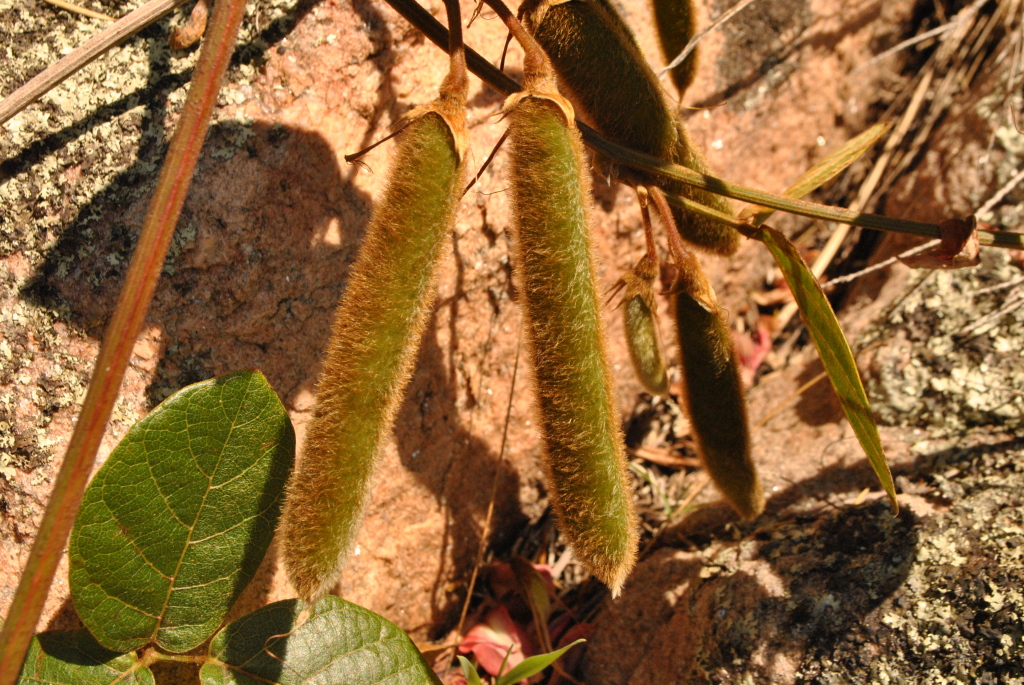Kennedia rubicunda
(Schneev.) Vent. Dusky Coral-peaTwining or occasionally prostrate herb; stems wiry, to 4 m long, rusty-pubescent. Leaflets ovate to lanceolate, obovate or orbicular, mostly 2–12 cm long, 2–8 cm wide, more or less glabrous to pubescent on both surfaces, apices obtuse to notched, sometimes mucronate; petiole 1–5 cm long; lateral leaflets subsessile to shortly petiolulate; upper leaflet on petiolule 5–20 mm long; stipules lanceolate, 2–5 mm long, leafy; stipellae filiform, 1–2 mm long. Inflorescences mostly 4–5 cm long, 2–12-flowered; peduncle mostly 2–7 cm long; pedicel 1–2 cm long; bracts 2–5 mm long, villous, caducous. Calyx 10–15 mm long, densely rusty-hairy. Corolla 30–40 mm long, dark red or purplish; standard narrow-obovate; wings shortest; keel nearly as long as standard. Pod oblong, 5–10 cm long, 8–12 mm wide, compressed, densely rusty-hairy; seeds 10–15, obloid, 5–6 mm long. Flowers mostly Sep.–Dec.
VVP, GipP, OtP, EGL, EGU, HSF, HNF, Strz, HFE. Also Qld, NSW. Common in far eastern Victoria where found in open-forests and rainforest margins. Particularly abundant following fires.
Popular in horticulture for its large dark red flowers, and occasionally recorded as an adventive in nearby native vegetation.
Jeanes, J.A. (1996). Fabaceae. In: Walsh, N.G.; Entwisle, T.J., Flora of Victoria Vol. 3, Dicotyledons Winteraceae to Myrtaceae, pp. 663–829. Inkata Press, Melbourne.
 Spinning
Spinning

